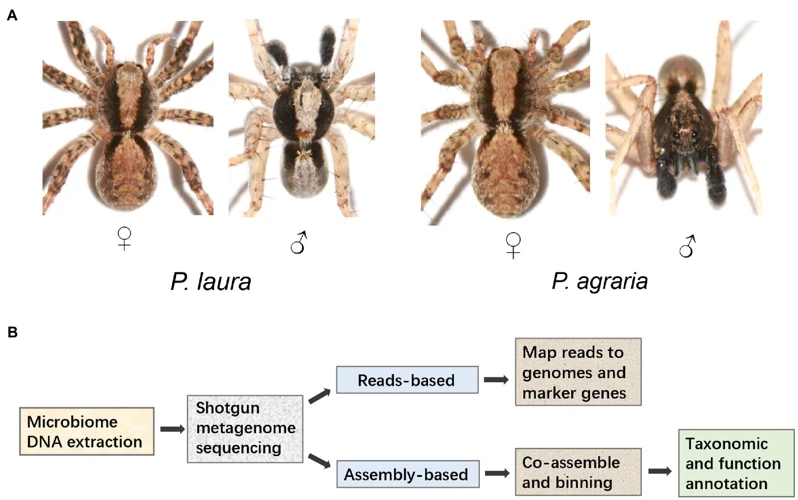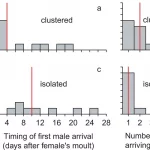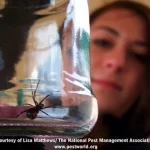The wolf spider is a fascinating creature that is an important part of many ecosystems. However, human activity has had a profound impact on their habitats, leading to a decline in their populations. It is imperative that we understand the role of wolf spiders in our environment and take steps to protect them. From deforestation to climate change, there are a variety of factors that are contributing to the loss of wolf spider habitat. In this article, we will explore the unique characteristics of wolf spiders, their importance to the ecosystem, and the consequences of their habitat loss. We will discuss efforts that are being made to conserve their habitats, and the role that we can all play in their protection.
Why Wolf Spiders are Important
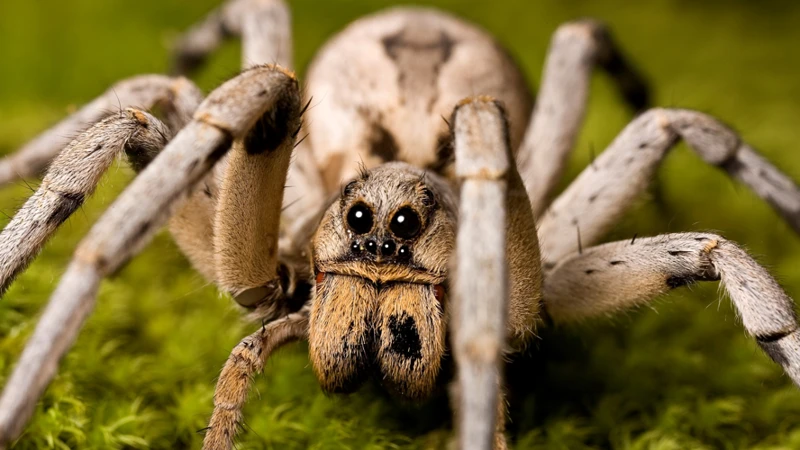
As small as they may be, wolf spiders play a vital role in the ecosystem. Their presence helps maintain the delicate balance of nature by controlling the insect population. These spiders are not just predators but prey as well, making them an important part of the food chain. Unfortunately, human activities have had a significant impact on wolf spider habitats, threatening their existence. It is crucial to understand why wolf spiders are important and how human actions have affected their habitats. By recognizing their significance, we can protect and conserve them. Let’s explore the unique characteristics and role of wolf spiders in more detail. To learn about human activities affecting wolf spider habitats, click on the deforestation, climate change, pesticides, and urbanization links. Additionally, learn about the importance of maintaining biodiversity by visiting the biodiversity page.
Wolf Spiders in the Ecosystem
Wolf spiders play an integral role in various ecosystems around the world. They are considered to be a key predator as they help control insect populations. Here are some ways how wolf spiders contribute to the ecosystem:
| Contribution | Description |
|---|---|
| Predator Control | Wolf spiders feed on various insect species such as mosquitoes, flies, and aphids, thus helping to control their populations. This makes them an important contributor to pest control in agricultural ecosystems. |
| Food Source for Other Animals | Wolf spiders serve as a food source for many other animals such as birds, lizards, and other larger spider species. Their presence helps maintain the balance of the food chain in the ecosystem. |
| Resource Partitioning | Wolf spiders play an important role in resource partitioning, which is the ability of different species to coexist by dividing up resources like food and space. By consuming different prey species, wolf spiders help reduce competition among other predators in the ecosystem. |
| Pollination | Studies have also shown that wolf spiders contribute to pollination by transporting pollen on their legs as they move from plant to plant. This helps promote genetic diversity and stability in plant populations. |
Wolf spiders are crucial to maintaining a healthy and balanced ecosystem. Human activities that negatively impact wolf spider habitats can have significant consequences on the ecosystem and the species that depend on it.
Unique Characteristics of Wolf Spiders
Wolf spiders are a fascinating species of arachnids with some unique characteristics that set them apart from other spiders. Here are some of their most notable traits:
- Hunting prowess: Wolf spiders are skilled hunters that do not build webs to catch their prey. Instead, they roam in search of their next meal, often ambushing their victims by leaping on them with lightning-fast reflexes.
- Predatory instincts: These spiders have excellent vision and are active hunters, making them a top predator in their environment. Their large eyes are positioned on the front of their head, giving them a binocular vision that allows them to more accurately judge depth and distance.
- Carrying their young: Female wolf spiders are unique in that they carry their egg sacs with them wherever they go. They use their powerful jaws to grasp the sacs and then attach them to their spinnerets, where they are carried for weeks at a time until the spiderlings hatch.
- Affectionate mothers: Once wolf spiderlings hatch from their egg sacs, they climb onto their mother’s back and cling to her for warmth and protection. The mother spider carries her young around with her for several days until they are mature enough to begin hunting on their own.
- Varied habitats: Wolf spiders are highly adaptable and can be found in a wide variety of environments, from forests to grasslands to deserts. Some species even live in human habitats, such as gardens and backyards, where they help control insect populations.
- Diverse species: There are over 2,000 species of wolf spiders worldwide, each with its own unique characteristics and habitats. These spiders come in a variety of sizes, colors, and shapes, making them a fascinating subject for scientists and enthusiasts alike.
Wolf spiders are a valuable and fascinating species of arachnid with some unique characteristics that make them well worth studying. As we will see, human activity has had a significant impact on their habitats and populations, leading to concerns about their conservation and future survival.
Human Activity that Affects Wolf Spider Habitats
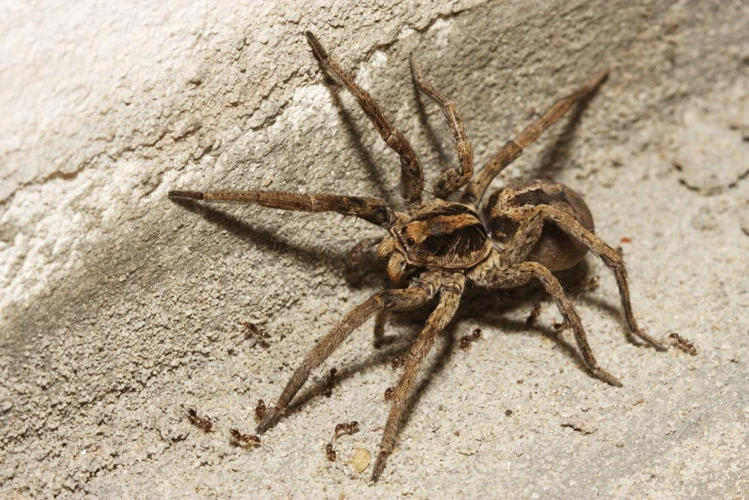
The survival of wolf spiders heavily relies on their habitats, which unfortunately are facing increasing threats due to human activities. These activities can cause significant damage to the ecological balance, altering the natural environment and affecting the food chain. From deforestation to climate change, the impact of human activity on the habitats of wolf spiders is undeniable. Let’s take a closer look at some of the greatest threats to wolf spider habitats.
Deforestation
Deforestation is one of the most significant activities that affect wolf spider habitats. This process involves clearing large areas of forests for commercial purposes, such as timber harvesting, agriculture, and livestock farming. This, in turn, leads to the destruction of the natural habitats of wolf spiders and other forest species.
The following are the impacts of deforestation on the habitats of wolf spiders:
- Loss of shelter: Wolf spiders construct their dens in the leaf litter and debris on the forest floor. Deforestation destroys the leaf litter, making it hard for the wolf spiders to find shelter.
- Loss of prey: Wolf spiders feed on insects that live in the forest. Deforestation removes the plants that support insect populations, thereby depriving wolf spiders of their primary food source.
- Fragmentation of habitats: Deforested areas often become fragmented, making it difficult for wolf spiders to move from one place to another in search of food and shelter. This, in turn, leads to a decline in their population size and genetic diversity.
- Exposure to sunlight: Wolf spiders, like most spiders, are nocturnal. Deforestation exposes their habitats to sunlight, making it difficult for them to thrive.
- Increased competition: When wolf spiders’ habitats are destroyed, they often move to other areas, leading to overcrowding and increased competition for resources such as food and shelter.
Deforestation poses serious threats to the survival of wolf spiders. It is crucial that sustainable practices such as selective logging and reforestation are implemented to preserve the natural habitats of these species.
Urbanization
Urbanization is another human activity that has a significant impact on the habitats of wolf spiders. As urban areas continue to expand, natural habitats are being destroyed or modified in ways that make them unsuitable for many wildlife species. This is particularly true for wolf spiders that rely on specific habitats for their survival.
1. Habitat loss: The expansion of urban areas often results in the loss of natural habitats and green spaces. These habitats provide the food and shelter wolf spiders need to survive. Without suitable habitats nearby, wolf spiders are forced to either adapt to new environments or perish. Unfortunately, most wolf spiders are not able to adapt quickly enough to survive the changes.
2. Fragmentation of habitats: As urbanization progresses, habitats are often fragmented and transformed into isolated patches. This makes it difficult for wolf spiders to move from one area to another, limiting their access to food and mates. Fragmented habitats may also be more prone to invasive species, which can compete with native species for resources and further disrupt the ecosystem.
3. Pollution: Urban areas can be sources of pollution, including air, water, and soil pollution. These pollutants can harm wolf spiders directly or indirectly through their impact on prey species or the habitat quality. Additionally, light pollution from streets and buildings can also affect wolf spiders, as many species are nocturnal and rely on darkness to hunt and hide.
4. Human-Wolf Spider conflict: In some cases, wolf spiders can be seen as a nuisance in urban areas and may be subject to pest control measures. This results in a direct conflict between humans and wolf spiders, potentially leading to the destruction of habitats and the loss of wolf spider populations.
Urbanization has significant negative impacts on the habitats of wolf spiders, including habitat loss, fragmentation, pollution, and human-wolf spider conflict. To mitigate these impacts, sustainable urban design and planning that accounts for the needs of wildlife species must be implemented.
Agriculture and Pesticides
Agricultural activities, including the use of pesticides, have a significant impact on wolf spider habitats. Pesticides are chemicals used to control pests, weeds, and diseases in crops, but they also affect other organisms in the ecosystem, including wolf spiders. Pesticides may directly kill or repel wolf spiders, reducing their numbers and disrupting their natural behavior.
In addition to pesticides, agricultural practices like tilling and monoculture can damage wolf spider habitats. Tilling disturbs the soil and destroys the physical structures that wolf spiders use for shelter. Monoculture, the practice of growing a single crop species in large areas, reduces the diversity of plants and prey available to wolf spiders. This habitat fragmentation creates barriers for wolf spiders to move from one part of the ecosystem to another.
It’s important to note that wolf spiders can actually be beneficial to agriculture as they act as natural pest control agents, reducing the need for pesticides. However, continued use of pesticides and other harmful agricultural practices can cause long-term damage to wolf spider populations and other beneficial arthropods.
To mitigate the effects of agriculture and pesticides on wolf spiders, there needs to be a shift towards sustainable agricultural practices. This includes practicing integrated pest management methods that rely on natural predators, crop rotation, and other practices that reduce the need for pesticides. Additionally, farmers can implement conservation practices such as creating buffer zones around crops and promoting biodiversity, which will help to create a more favorable habitat for wolf spiders and other beneficial organisms.
The impact of agriculture and pesticides on wolf spider habitats needs to be addressed in order to preserve these crucial ecosystems. Sustainable agricultural practices and conservation efforts can help maintain healthy wolf spider populations that provide ecological benefits to both agricultural and natural ecosystems.
Climate Change
The drastic changes in our climate are also an important factor that affects wolf spider habitats. Climate change causes extreme weather events, such as floods, droughts, fires, and melting ice caps, which all lead to changes in the natural environment. Here are some ways in which climate change affects wolf spider habitats:
- Increased Temperature: Rising temperatures due to global warming can cause the extinction of certain species and disrupt ecosystems. As wolf spiders thrive in specific temperature ranges, any significant increase in temperature can significantly affect their survival and reproduction rates.
- Changes in Precipitation Patterns: Changes in precipitation patterns can also impact wolf spider populations. For example, prolonged droughts can cause a lack of food and water for spiders, while heavy rainfall can flood their habitats, leading to the loss of eggs or nests.
- Arctic Melting: As the Arctic melts, it brings new predators into wolf spider habitats – such as parasitic wasps – which can threaten the spider populations and cause a decline in the population in that area.
- Shifts in Seasons: Climate change is also causing shifts in the seasons, which can affect the cues that wolf spiders use to reproduce and move around.
The consequences of climate change on wolf spider habitats are severe. If we fail to address the issue of climate change, it could lead to the extinction of many species including wolf spiders. It’s important to take action now to stop climate change from impacting our ecosystems and the biodiversity that it supports.
Consequences of Loss of Habitat for Wolf Spiders
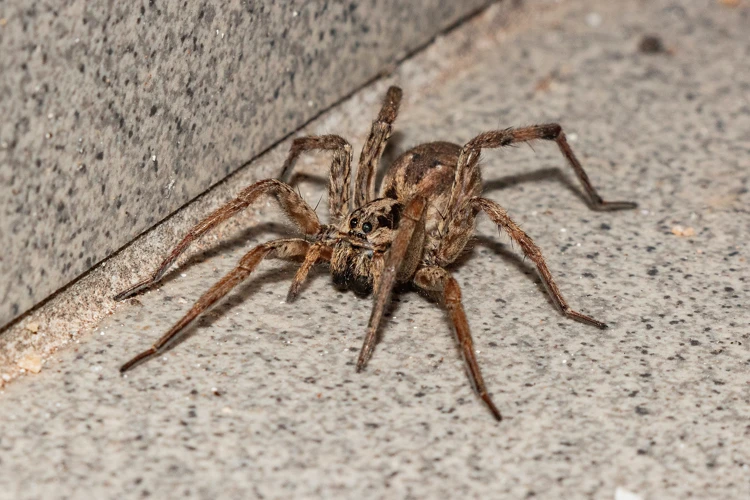
As human activities continue to impact animal habitats across the world, it’s important to understand the consequences of losing crucial habitats for different species. In the case of wolf spiders, the loss of their natural habitat can have far-reaching consequences for the ecosystem as a whole. From the food chain to biodiversity and ecological services, the effects of habitat loss can be devastating. Let’s dive deeper into the various consequences that arise when wolf spider habitats are destroyed.
Impact on the Food Chain
The loss of wolf spider habitats can have a significant impact on the food chain. Wolf spiders are known for being fierce predators and play an important role in controlling insect populations. Their diet consists of a wide range of insects such as cockroaches, crickets, grasshoppers, and even other spiders. If wolf spiders are unable to find suitable habitats due to human activities, the insect population could explode and cause unintended consequences.
1. Increase in Pest Population: Without wolf spiders to keep insect populations in check, agricultural areas and natural ecosystems could see an increase in pests. This could lead to a decrease in crop yields and damage to natural ecosystems.
2. Predation on Other Species: Wolf spiders are also known to prey on other types of spiders. Without wolf spiders, spiders that are typically kept in check could experience a population boom. This can also have a negative impact on the food chain as these spiders may prey on insects that are important pollinators or predators of other pests.
3. Effect on Predators Higher Up the Food Chain: Wolf spiders also serve as food for a variety of animals higher up the food chain, such as birds and reptiles. Loss of their population can further disrupt the balance of the food chain, leading to unintended consequences for these predators.
4. Disruption of Nutrient Cycling: Wolf spiders play an important role in nutrient cycling. By preying on insects, they contribute to the breakdown and transfer of nutrients through the food chain. The loss of wolf spider populations could result in a decrease in nutrient cycling, which could have cascading effects on ecosystems.
The loss of wolf spider habitats can have far-reaching consequences beyond just the spider population itself. It’s important to recognize the role that these spiders play in the food chain and take steps to conserve their habitats to prevent unintended impacts on ecosystems.
Threat to Biodiversity
The loss of wolf spider habitats due to human activity poses a significant threat to biodiversity in the affected ecosystems. Wolf spiders are key predators in many habitats, and their presence or absence can have cascading effects on the entire food web. When wolf spider populations decline, prey species may increase unchecked, leading to overgrazing and erosion. Similarly, if wolf spider populations disappear altogether, their ecological niche may be filled by invasive species, leading to further imbalances in the ecosystem.
This loss of biodiversity can also have ripple effects on human communities. Many cultural practices, such as hunting and fishing, depend on the presence of diverse and healthy ecosystems. Additionally, many medicines and other resources are derived from natural systems that are threatened by the loss of biodiversity.
To mitigate the threat to biodiversity, it is necessary to take a holistic approach that addresses the root causes of habitat loss. Conservation efforts should focus on preserving existing habitats, restoring degraded habitats, and implementing sustainable land use practices. Education and awareness programs can also play an important role in helping communities understand the value of biodiversity and the importance of habitat conservation. By working together, we can help to ensure the long-term health and diversity of our natural systems.
Possible HTML list:
- The loss of wolf spiders can lead to unchecked prey populations and overgrazing
- Disappearance of wolf spiders can lead to niche filling by invasive species
- Losing biodiversity can affect human communities, cultural practices, and medicine production
- Conservation efforts should focus on preserving habitats, restoring degraded habitats, and implementing sustainable land use practices
- Education and awareness programs can promote understanding of the importance of biodiversity and habitat conservation
Loss of Ecological Services
When human activities lead to the loss of wolf spider habitats, it can result in a reduction of ecological services provided by these spiders. Wolf spiders are known for their predatory behavior, and they play a crucial role in controlling insect populations.
Ecological Services of Wolf Spiders
| Ecological Service | Description |
|---|---|
| Pest Control | Wolf spiders prey on a variety of insects, including agricultural pests and disease-carrying vectors. |
| Seed Dispersal | Some wolf spider species transport seeds while moving around, contributing to plant dispersion and maintenance of healthy plant populations. |
| Soil Health | Wolf spiders are soil-dwelling organisms that can aerate soil and improve nutrient cycling. |
The loss of wolf spider habitats can cause a decrease in the population of these spiders, leading to an increase in the population of their prey. This, in turn, can lead to an increase in the use of pesticides and other control measures, which further disrupts the ecosystem.
Wolf spiders play a role in seed dispersal. Some species of wolf spiders carry seeds while moving around, contributing to the dispersion and maintenance of healthy plant populations. The loss of wolf spider habitats, therefore, has the potential to affect the composition and diversity of plant species in the surrounding ecosystem.
Finally, wolf spiders can also promote soil health by aerating the soil and improving the cycling of nutrients. The loss of this ecological service can have impacts on soil quality, leading to decreased yields in agricultural areas and impacting natural ecosystems.
The loss of wolf spider habitats can have far-reaching consequences for the surrounding ecosystem. These consequences, such as the loss of pest control, seed dispersal, and soil health, highlight the importance of developing effective conservation measures for wolf spiders and their habitats.
Efforts to Conserve Wolf Spider Habitats
As human activity continues to impact the habitats of wolf spiders, many efforts have been made to conserve their populations. These diverse and collaborative efforts aim to address the imminent threats to wolf spider habitats and preserve these important species in the ecosystem. From habitat restoration to sustainable land use practices, different strategies are being implemented across the globe to ensure the survival of these vital predators. Let’s explore some of the effective initiatives that are being undertaken to conserve the habitats of wolf spiders.
Habitat Restoration and Conservation
One of the most effective ways to protect wolf spiders and their habitats is through habitat restoration and conservation efforts. These efforts involve the restoration of natural habitats, protection of existing habitats, and establishment of new habitats to support the wolf spider population.
Habitat Restoration: Habitat restoration refers to the process of bringing back a damaged or destroyed habitat to its original condition. One common practice in restoring wolf spider habitats is the replanting of vegetation, especially those that are native to the area. This helps in providing cover and shelter for the spiders and their prey. Additionally, habitat restoration efforts aim to reduce pollution and erosion to protect the quality of the soil and water in the area.
Habitat Conservation: Habitat conservation involves the protection of natural habitats from human activities that may lead to their degradation or destruction. This can be achieved through the creation of protected areas, such as national parks or reserves, where wolf spiders and their habitats can thrive undisturbed. Additionally, conservation efforts may involve the implementation of regulations or restrictions that limit the activities of humans in certain areas to minimize their impact on wolf spider habitats.
Establishment of New Habitats: Another strategy in preserving wolf spider habitats is the establishment of new habitats on previously unused or underutilized lands. This can be done through the creation of new green spaces, such as parks or nature reserves, or through the restoration of abandoned industrial sites. By creating new habitats, more spaces are made available, which can help prevent overcrowding and competition for resources.
To implement habitat restoration and conservation efforts, there are several organizations and agencies that work towards preserving wolf spider habitats. These include government agencies, non-profit organizations, and volunteer groups who work on habitat restoration projects, promoting conservation practices, and raising awareness about the importance of protecting wolf spider habitats.
Table:
| Habitat Restoration and Conservation | Examples |
|---|---|
| Habitat Restoration | Replanting native vegetation, reducing pollution and erosion |
| Habitat Conservation | Creation of protected areas, implementation of regulations/restrictions |
| Establishment of New Habitats | Creation of new green spaces, restoration of abandoned industrial sites |
| Organizations and Agencies | Government agencies, non-profit organizations, volunteer groups |
Habitat restoration and conservation efforts are crucial in preserving wolf spider habitats and ensuring their survival. By working together, we can protect these important creatures and the ecosystems in which they live.
Education and Awareness Programs
Education and awareness programs serve an essential role in the conservation and protection of wolf spider habitats. These programs help raise awareness about the importance of wildlife conservation and the role that wolf spiders play in our ecosystem.
In many cases, people are unaware of the impact their actions have on the environment, including wolf spiders and their habitats. Education and awareness programs aim to educate the public about the importance of wolf spiders and how their habitats are being affected by human activity.
One way that education and awareness programs can be implemented is through community outreach. This involves engaging with local communities, schools, and organizations to provide information about wolf spiders and their habitats. This can include presentations, workshops, and hands-on activities that teach people about the importance of conserving these habitats.
Another way that education and awareness programs can be implemented is through social media and online campaigns. These campaigns can target a larger audience and educate people about the importance of wolf spiders and their habitats. This includes sharing videos, images, and information about the impacts of human activity on these habitats.
| Benefits of Education and Awareness Programs | Description |
|---|---|
| Increased Understanding | Education and awareness programs help increase public understanding of the importance of wolf spiders and how they contribute to our ecosystem. |
| Increased Conservation Efforts | By educating people about the importance of wolf spiders, these programs can inspire people to take action to conserve these habitats and protect these important species. |
| Reduced Human Impact | Through education and awareness programs, people can learn how their actions impact the environment and take steps to reduce their impact on wolf spider habitats. |
| Increased Support for Conservation Efforts | By educating the public about wolf spiders and their habitats, these programs can generate public support for conservation efforts and policies. |
Education and awareness programs play a critical role in the conservation and protection of wolf spider habitats. By educating the public about the importance of these habitats and the impact of human activity, these programs can inspire people to take action and protect these essential ecosystems.
Sustainable Land Use Practices
It is crucial to adopt sustainable land use practices in order to help protect the habitats of wolf spiders. By doing so, we can ensure that wolf spiders and other organisms can thrive while meeting human needs. Here are some sustainable land use practices that can be adopted to help conserve wolf spider habitats:
- Crop rotation: Crop rotation is a sustainable land use practice that can help control pests and reduce the need for synthetic pesticides. By rotating crops, pest populations are disrupted, making it harder for them to establish and persist. This can benefit wolf spiders as it reduces their exposure to harmful pesticides.
- Integrated pest management: Integrated pest management combines a variety of methods and techniques to manage pests, including cultural, biological, and chemical methods. By integrating a variety of techniques, it is possible to reduce reliance on synthetic pesticides, which can have negative impacts on wolf spiders and other organisms in the ecosystem.
- Agroforestry: Agroforestry is a land use system that combines the cultivation of crops and trees. By integrating trees into agricultural landscapes, soil improvement, pest control, nutrient cycling, and provision of habitat for wildlife can be achieved. This can benefit wolf spiders as it can provide them with a suitable habitat.
- Conservation tillage: Conservation tillage is a land use practice that helps to reduce soil erosion and conserve soil moisture. By reducing tillage, soil structure is improved, and pests are discouraged from infesting crop fields. This can benefit wolf spiders by improving soil quality in their habitats.
- Restoration of degraded land: Restoration of degraded lands can help to restore the ecological functions of wolf spider habitats. Restoring degraded land can involve a range of activities, such as planting native vegetation, restoring degraded watercourses, or reintroducing grazing animals. This can benefit wolf spiders by restoring their natural habitats.
By adopting these sustainable land use practices, we can help to protect the habitats of wolf spiders and other organisms in the ecosystem. It is important to recognize that the long-term well-being of humans and the environment are closely linked and that adopting sustainable land use practices can help to ensure a sustainable future for all.
Conclusion
In conclusion, it is clear that human activity has a significant impact on wolf spider habitats. Deforestation, urbanization, agricultural practices, pesticide use, and climate change all contribute to the destruction of these spider’s homes. The consequences of losing wolf spider habitats are not only limited to wolf spiders, but also have far-reaching impacts on the entire ecosystem.
Efforts to conserve wolf spider habitats are critical for the preservation of biodiversity and ecological services. Habitat restoration and conservation efforts, as well as sustainable land use practices, are effective ways to help protect these spiders’ homes. Education and awareness programs can also play a crucial role in creating a more conservation-minded society.
It is important to note that wolf spiders are just one example of the numerous species that are affected by human activity. Therefore, it is important that we all take responsibility for our actions and strive to create a more sustainable and eco-friendly world. Through collective efforts, we can help preserve the delicate balance of the ecosystems in which we live and ensure a healthier future for all species, including wolf spiders.
Frequently Asked Questions
What do wolf spiders eat?
Wolf spiders feed on insects, other spiders, and small animals such as lizards and even small mammals.
What is the lifespan of a wolf spider?
The lifespan of a wolf spider ranges from one to three years, depending on the species and environmental factors.
Do wolf spiders pose a threat to humans?
Although wolf spiders are venomous, they usually do not pose a significant threat to humans. They may bite if provoked, but their venom is not usually harmful to humans. Symptoms of a wolf spider bite may include pain, swelling, and redness.
How do deforestation and habitat loss affect wolf spiders?
Deforestation and habitat loss greatly affect wolf spiders by reducing their available habitat and food sources. This can lead to a decline in their population and threaten their survival.
What impact does urbanization have on wolf spiders?
Urbanization can negatively impact wolf spiders by destroying their habitat and disrupting their natural behavior. The use of pesticides and other chemicals in urban areas can also harm wolf spiders and their prey.
Are wolf spiders endangered?
The conservation status of wolf spiders varies depending on the species and their geographic location. Some species are considered endangered due to habitat loss and other threats.
How can sustainable land use practices benefit wolf spiders?
Sustainable land use practices, such as reforestation and reduced pesticide use, can help to protect and conserve wolf spider habitats. These practices can help to maintain a stable ecosystem and ensure a healthy wolf spider population.
What role do wolf spiders play in the ecosystem?
As predators, wolf spiders play an important role in the ecosystem by regulating the populations of insects and other small animals. They also serve as a food source for other predators such as birds and reptiles.
How can education and awareness programs help to conserve wolf spiders?
Education and awareness programs can help to increase public knowledge about the importance of wolf spiders in the ecosystem and the threats that they face. This can help to promote conservation efforts and reduce negative human impact on wolf spider habitats.
What can individuals do to help conserve wolf spider habitats?
Individuals can help to conserve wolf spider habitats by reducing their use of pesticides and supporting sustainable land use practices. Planting native vegetation and supporting conservation organizations can also help to protect and conserve wolf spider habitats.

